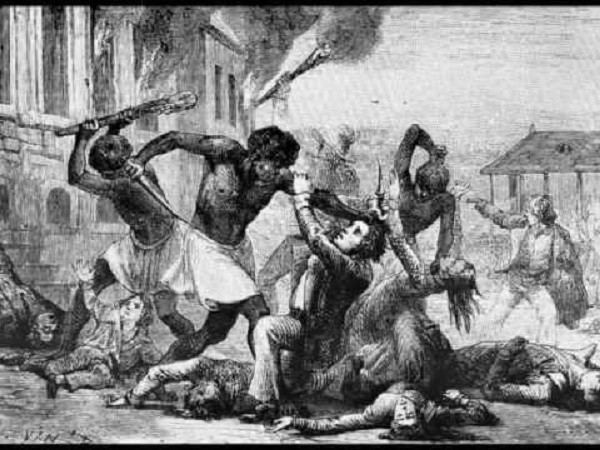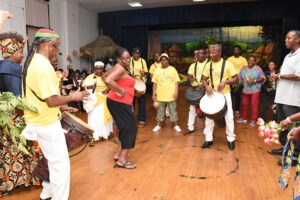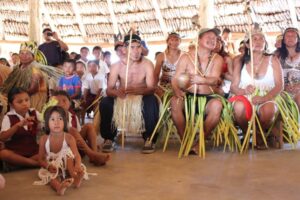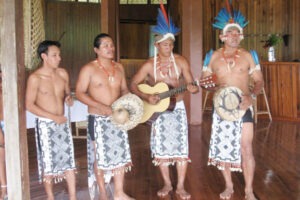The birth of the Berbice Rebellion
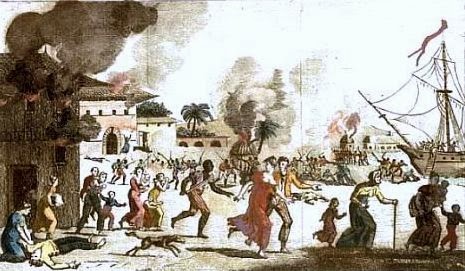 During the early stages of Guyana, as plantations expanded, so was the population of African slaves. The owners of these plantations only wanted to extract the greatest amount of labour from the slaves despite their unkempt living conditions. These slaves were forced to live under those conditions even though there was little to no improvement. As a result of such harsh treatment and other horrible punishments inflicted on them by the plantation owners, some of the slaves decided to rebel while some escaped into the forests. Those who escaped suffered terrible consequences such as death as punishment for escaping. This punishment served as a deterrent to other slaves who might have also planned to escape. Nevertheless, some of the the run away slaves ended up in Suriname where they joined up with Bush Negro colonies.
During the early stages of Guyana, as plantations expanded, so was the population of African slaves. The owners of these plantations only wanted to extract the greatest amount of labour from the slaves despite their unkempt living conditions. These slaves were forced to live under those conditions even though there was little to no improvement. As a result of such harsh treatment and other horrible punishments inflicted on them by the plantation owners, some of the slaves decided to rebel while some escaped into the forests. Those who escaped suffered terrible consequences such as death as punishment for escaping. This punishment served as a deterrent to other slaves who might have also planned to escape. Nevertheless, some of the the run away slaves ended up in Suriname where they joined up with Bush Negro colonies.
In 1762, the then Dutch colony Berbice experienced a slave rebellion of 36 male and female slaves. Thereafter, a militia force sent by the Governor, Van Hoogenheim repressed the rebellion executing atleast one slave who tried to escape. These repressive techniques of the planters were getting heated and so a stronger and more organised revolt took place on 23 February, 1763. This uprising is what is now known as the Berbice Slave Rebellion.
How the Berbice Slave Rebellion occurred
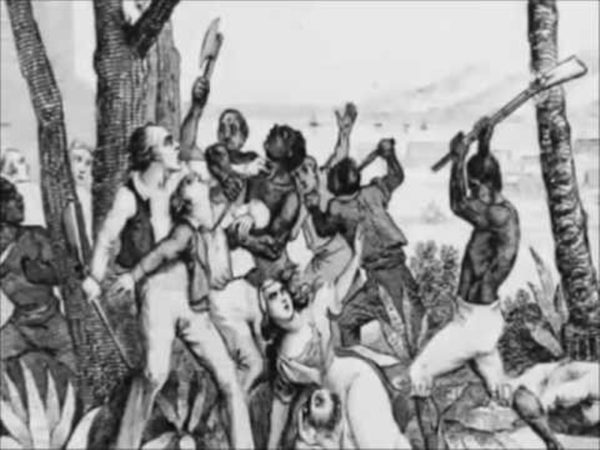 The uprising began on a plantation on the Upper Canje River at Magdalenenburg, which was owned by a widow, Madam Vernesobre. This is whereby the slaves got more brutal by setting their owner’s house on fire and killing the manager and carpenter. They then moved on to neighbouring plantation in Corentyne to have the support of other slaves who joined them whilst some escaped into the forest. On the Canje plantation, the rebelling Africans were readily organized as a fighting force by the house slave Coffy. Coffy was brought to the plantation as a child and was trained as a cooper by the owner, Barkey.
The uprising began on a plantation on the Upper Canje River at Magdalenenburg, which was owned by a widow, Madam Vernesobre. This is whereby the slaves got more brutal by setting their owner’s house on fire and killing the manager and carpenter. They then moved on to neighbouring plantation in Corentyne to have the support of other slaves who joined them whilst some escaped into the forest. On the Canje plantation, the rebelling Africans were readily organized as a fighting force by the house slave Coffy. Coffy was brought to the plantation as a child and was trained as a cooper by the owner, Barkey.
Governor, Van Hogenheim then decided to send all available military assistance at his disposal to the planters in Canje upon the news of the outbreak of the uprising. These included 12 soldiers and 12 sailors from one of the five ships in the harbour.
At that time, the entire colony had only 346 Whites inclusive of both women and children and 3,833 African slaves. In addition, throughout the period of the rebellion, the Mulattos who also formed a section of the population generally sided with the Whites. This rebellion began on privately owned estates which also captured the attention of slaves owned by the Berbice Association. Among killing a number of white men and women, the rebels burned buildings and cane fields. The rebels quickly reached plantations as far as the Berbice River. Some of these plantations included Juliana, Mon Repos, Essendam, Lilienburg, Bearestyn, Elizabeth and Alexandria, Hollandia, and Zeelandia. Given that, slaves from these other plantations joined with the rebel forces moving steadily towards the capital of Berbice, Fort Nassau, located 56 miles up the Berbice River on its right bank. Meanwhile they were attacking the plantations, gunpowder and guns belonging to the owners were seized.
This uprising continued with numerous attacks by their leader Coffy who declared himself Governor of Berbice. However, a number of creole slaves which are those born in the colony did not support the rebellion wholeheartedly. These slaves gave up themselves to plantations which were far removed from the area of rebel activity.

The 1763 Monument
Reasons for the Berbice Slave Rebellion
The lack of food
The successful revolt was due to many factors and one such was a reduction in the normal rations. It is believed that by 1762-3 Berbice slaves were no longer allowed to lay claim to being the best-fed slaves in the Caribbean. Among these were private slaves who even complained to the Amerindians that they were not getting anything to eat. Their leader Coffy believed that the slaves were not given what was due to them.
Planter cruelty
Another reason given by the slaves for the uprising was the cruelty of particular planters in which the names of a few were given. It was very difficult to know how Berbice planter cruelty in general compared with that in other colonies. Thought was also given to the fact that it was difficult to replace slaves and planters should have been more cautious about inflicting life-endangering punishments. However, there was a good amount of planters who were guilty of extreme brutality to their slaves. The nature and frequency of these punishment varied from one plantation to the next. As a result, the slaves were very conscious of these differences to distinguish the ‘good’ and ‘bad’ planters. The slaves had enough opportunity to make these comparisons since they would usually roam the river quite freely. The incidence of brutal punishments had increased on some plantations prior to 1763. At that time the slaves would have experienced a very real deterioration in all aspects of their daily life before the Uprising.
Lack of Freedom
Adding to shortage of food and cruelty, the most important thing the slaves wanted was their freedom. These slaves were practical in their planning of the revolt which was an extremely dangerous enterprise. Adding to that, organizing a widespread uprising and keeping it a secret was also very difficult. So even though slaves longed to be free, it was not very often that large number of people chose the option to revolt. This is regardless of individuals or small groups who might make private decisions to seek freedom by running away. Generally, before such occurs due to deterioration that affected a large number of people there had to be some opportunity given and the possibility of success along with leaders for the revolt to even occur.
Watch: 1763 Berbice Slave Revolt (Part 1)
The Berbice Rebellion was marked a National holiday
Today, the day of the uprising is a great event known to the nation as Mashramani. The great struggle for freedom led by coffy was a huge event that occured in our history. The Mashramani celebration is in honour of the spirit and achievement of the 1763 revolution whereby Guyanese connect in heart soul and mind with freedom after work which is the meaning of the term ‘Mashramani’. In essence the lesson of 1763 is that the slaves fought so they can be free.
References
- http://www.guyana.org/features/guyanastory/chapter30.html
- http://www.landofsixpeoples.com/news702/ns07042685.html
- https://www.kaieteurnewsonline.com/2011/02/23/1763-lest-we-forget/

